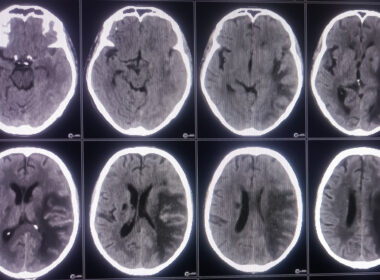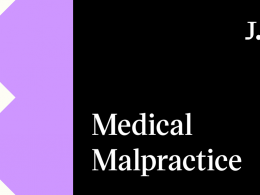A linear fracture is the most common type of skull fracture. It happens when there is a break in one or more lines that extend from the front of the head to its back.
This type of injury is typically caused by a single trauma. Most commonly, it’s the result of falling forward onto a hard surface such as concrete, but it can also be caused by getting hit by an object.
Linear skull fractures often occur in children when they fall and hit their heads, injuring the membrane covering head at birth. A linear head injury has a good prognosis – If pediatric skull fracture treatment is done as soon as possible. However, if left untreated, it could have grave consequences.
What is a linear fracture?
The term “linear fracture” describes a fracture that runs parallel to the surface of the skull. The bone may break in several locations, but the fracture lines are usually straight and horizontal.
The cause of linear skull injuries varies depending on age, gender, and other factors. In most cases, a child sustains a linear skull fracture due to trauma, sports injuries, falls, or motor vehicle accidents.
The location and severity of a linear skull fracture vary depending on where the bone was broken and how much time has elapsed since breaking. Skull fracture treatment in child
tends to heal well because the infant’s bones are still developing. On the other hand, an adult’s bones heal more slowly after suffering from such an injury.
How do linear fractures occur?
Linear skull fractures are caused by blunt or violent impacts on the head. These types of injuries can occur in several ways, including:
- Penetrating injuries
- Trauma to the head and neck.
- Concussion or a blow to the face or jaw.
- Child abuse, neglect, and domestic violence
- Collision – falling against another person or object
- Car accidents
- Falls from height
- Sports injuries
- Assaults involving a weapon or sharp object (e.g., screwdriver, hammer)
- Explosions and industrial accidents (e.g., mining)
- Impacts with hard objects (e.g., trees, walls)
How is linear skull fracture diagnosed?
A linear skull fracture is diagnosed by a doctor who examines the patient’s medical history, takes diagnostic imaging examinations of the head and other parts of the body, and performs other tests.
In addition, they will assess other injuries or conditions such as intracranial bleeding or stroke that cause headaches and ask about any recent travel or activity that might have led to a head injury.
To ensure accurate diagnosis and treatment, your doctors may perform:
- X-ray imaging to look at the broken bone. This can show how the break has affected your bone and how it affects your facial features.
- MRI (magnetic resonance imaging) or CT (computed tomography) scans to see if there are any internal injuries. These tests are more detailed than X-rays and may help determine the best treatment for you.
- Blood tests: These include blood counts and electrolytes.
- An exam by a physical therapist or chiropractor to help treat any muscle spasms that may be causing pain.
- If the injury is minor: Surgery may not be necessary for most head injuries in this type of break, but if you have a very serious injury that requires surgery, your doctor will recommend it.
How is linear skull fracture treated?
There are different types of treatment for skull fracture. The most common treatment options include:
- Physical therapy to reduce pain and stiffness
- Rest and immobilization
- Medications to help with headaches, dizziness, or nausea
- Procedures that may be done in the clinic to reduce swelling and relieve pressure on the brain (e.g., bed rest, ice packs)
- Steroid Injections: are used to reduce swelling and inflammation in the brain. Steroids may be injected directly into the brain or into nearby tissue like the muscles around the skull. Steroid injections have been shown to improve symptoms in patients with severe migraines and cluster headaches if given within three days of the onset of pain.
- Surgery: The doctor may recommend that the patient see a neurosurgeon if they have suffered an acute injury to the brain. This is, however, only necessary as a depressed skull fracture treatment
So, what is a depressed skull injury? This is a type of head injury that occurs when the force of an impact or fall on the head causes depression or indentation in the skull. It is commonly caused by motor vehicle accidents, sports injuries, and falls. It can also be a result of blows to the head from blunt objects like bats or hammers.
In general, surgery is not usually necessary in cases of minor head injuries, such as linear or diastatic fracture of skull. The patient will be examined by a doctor to determine whether they should be admitted to the hospital or sent home with medication.
What are the potential complications of a linear skull fracture?
There are three potential complications of a linear skull fracture:
- Internal dural tear. This is a rare complication that can occur at the site of the linear fracture and cause neurological symptoms.
- Subdural hematoma. This is caused by bleeding into the subarachnoid space, which then bleeds into the arachnoid and pia mater layers. Subdural hematoma is life-threatening if not treated quickly.
- Laceration of the brainstem. This occurs if there is an open wound on top of the fracture line. It causes damage to structures deep inside the brainstem that control vital functions like breathing and swallowing, as well as other systems like vision and hearing.
These are very rare complications with linear skull injuries; but if they are caught early enough, treatment can sometimes minimize the risk of permanent damage as well as other complications such as loss of sensation.
Conclusion: Early diagnosis and treatment will prevent complications
The skull protects all the delicate structures inside the head and stabilizes the brain. Even the slightest shift in position can cause a traumatic brain injury or worse. A linear skull injury is a serious diagnosis, but early diagnosis and medical treatment can help prevent more serious complications.
Most linear skull fractures heal on their own. A skull injury that hasn’t healed in three months should be checked by a doctor, especially if it causes headaches. If a skin area moves when you press on it, the underlying bone may not have knitted back together correctly. Treatment is usually with a hard (firm) and soft (rubberized) hat to protect the expanding skull and the soft scalp, respectively.












